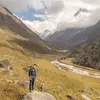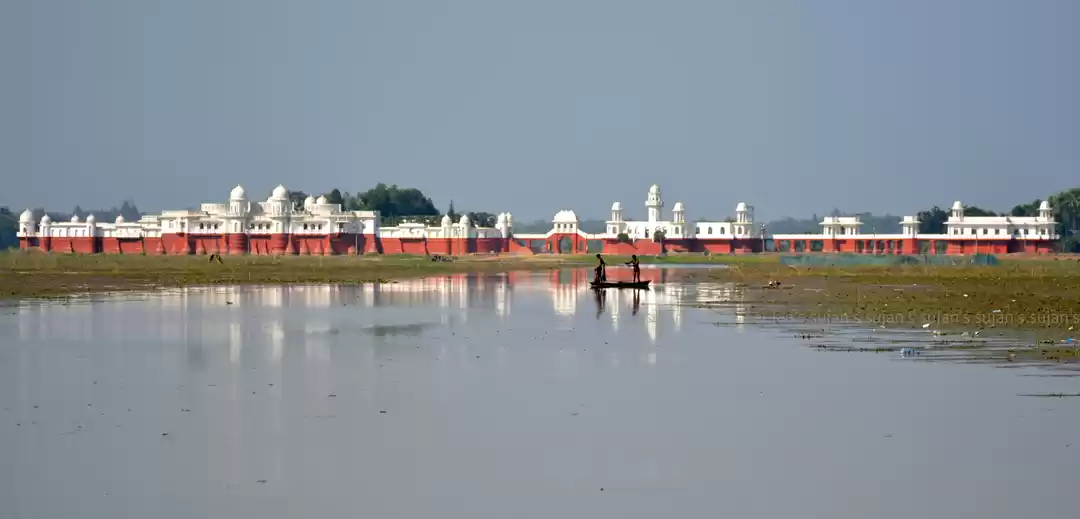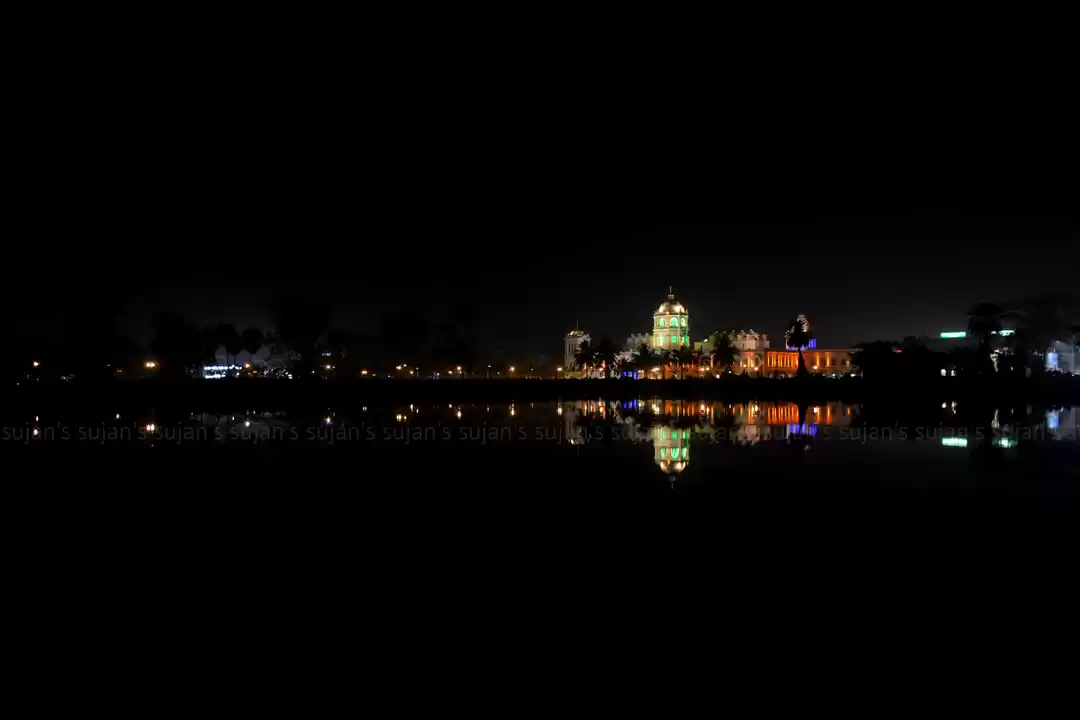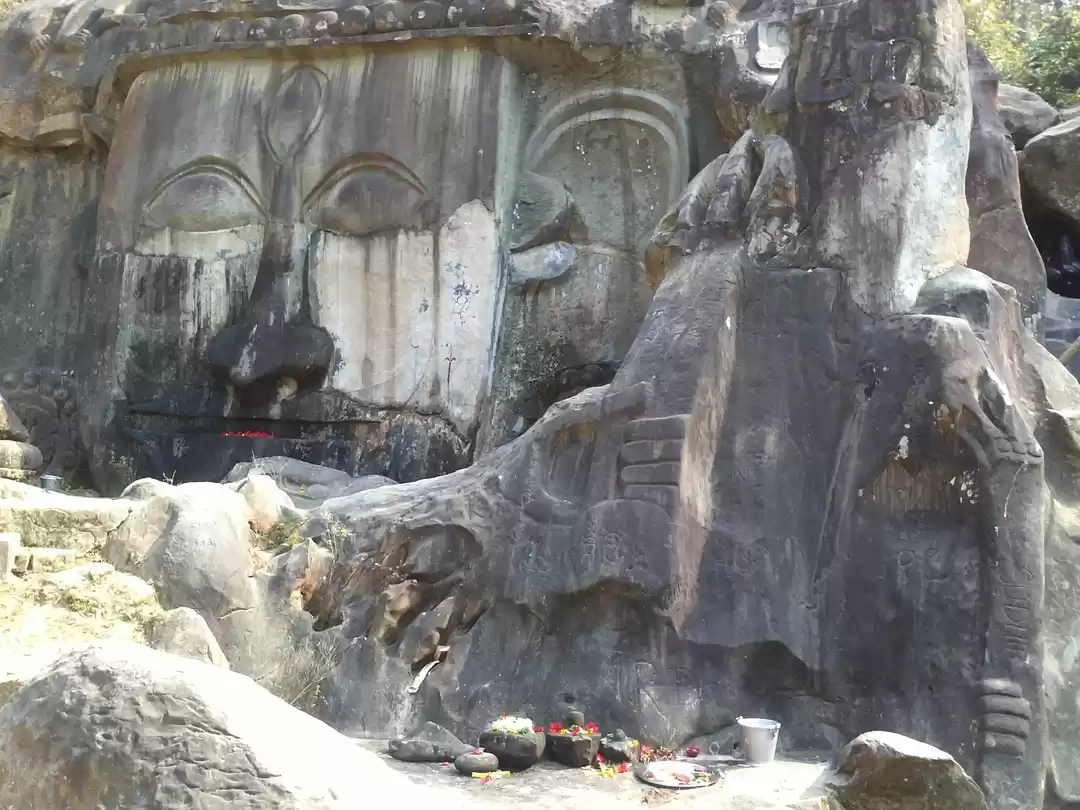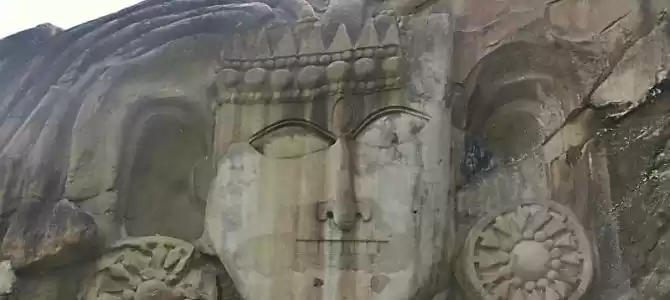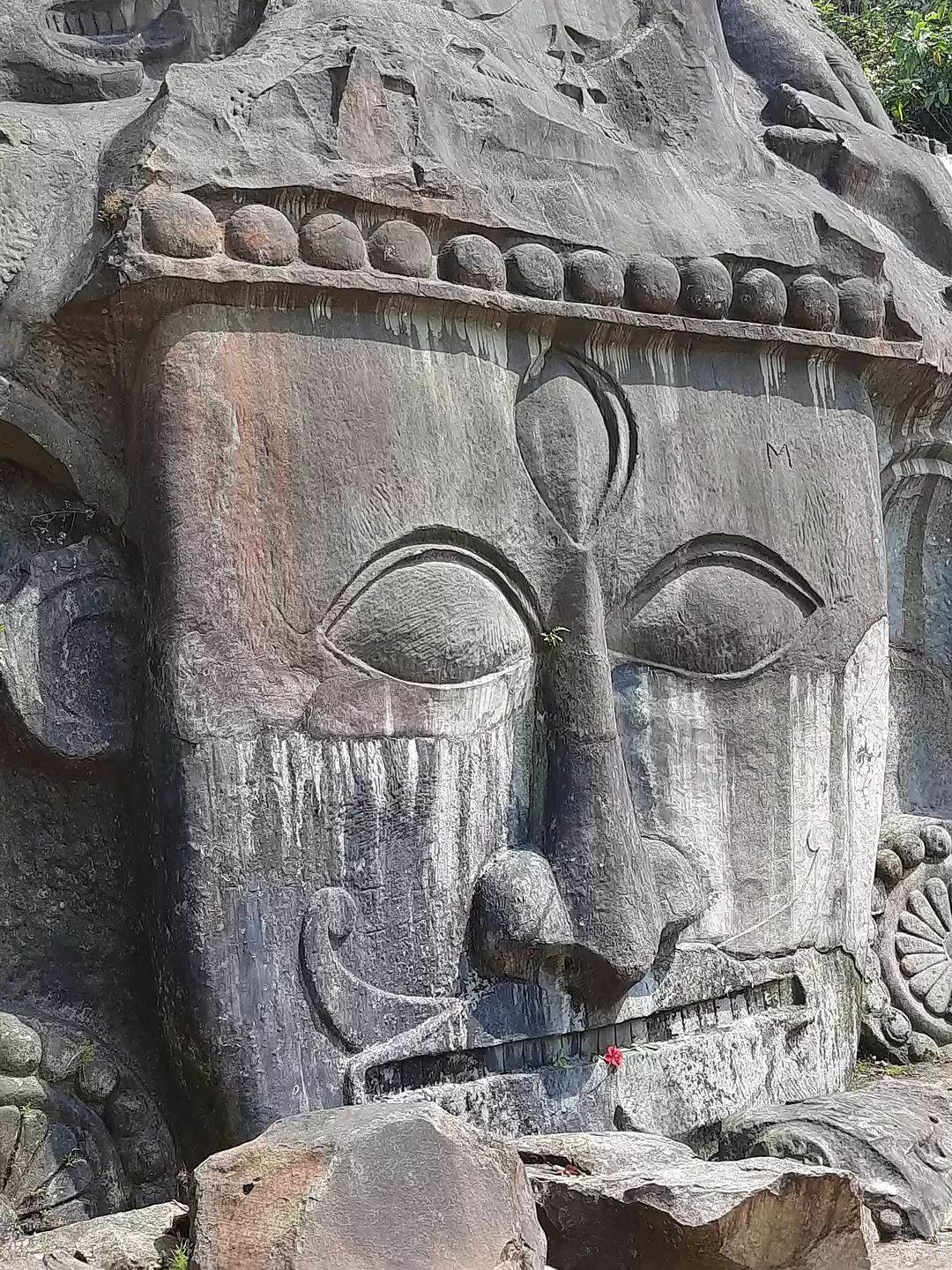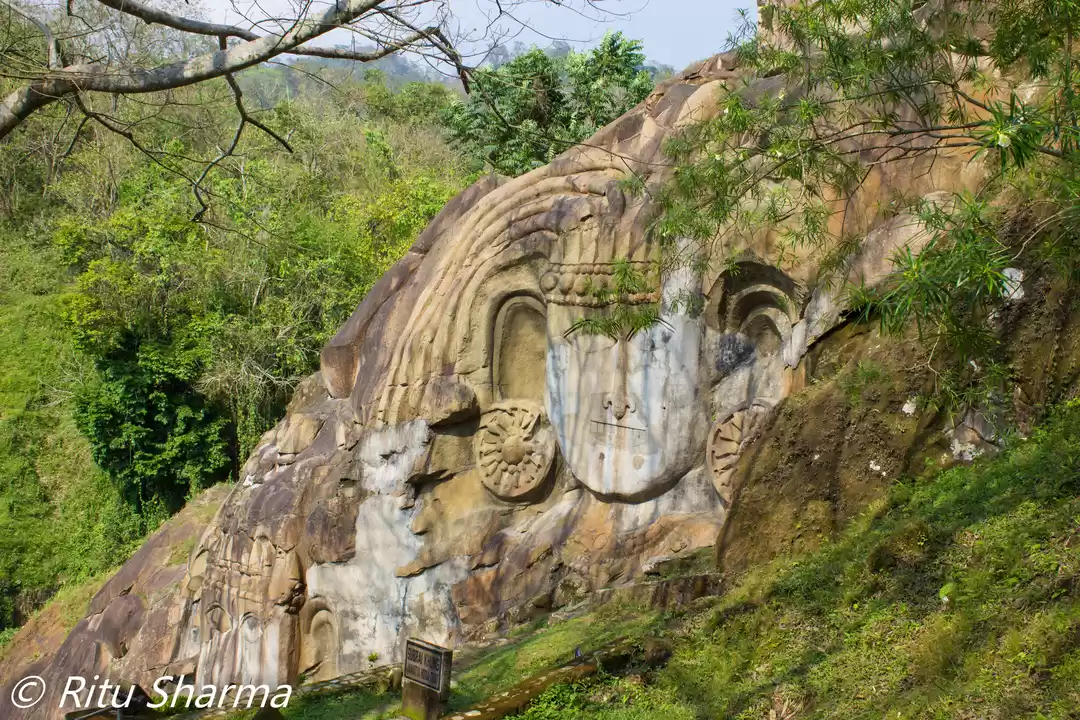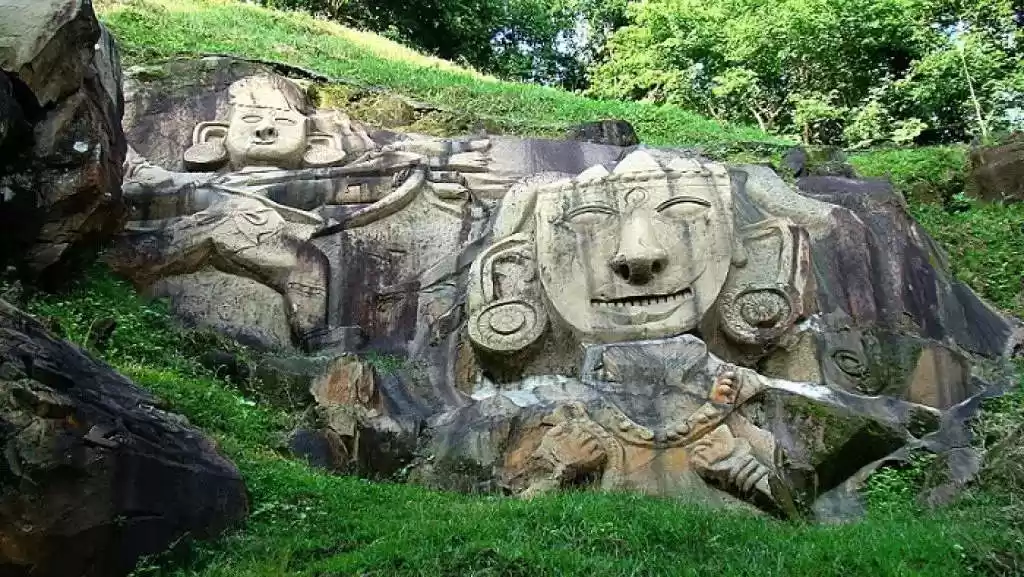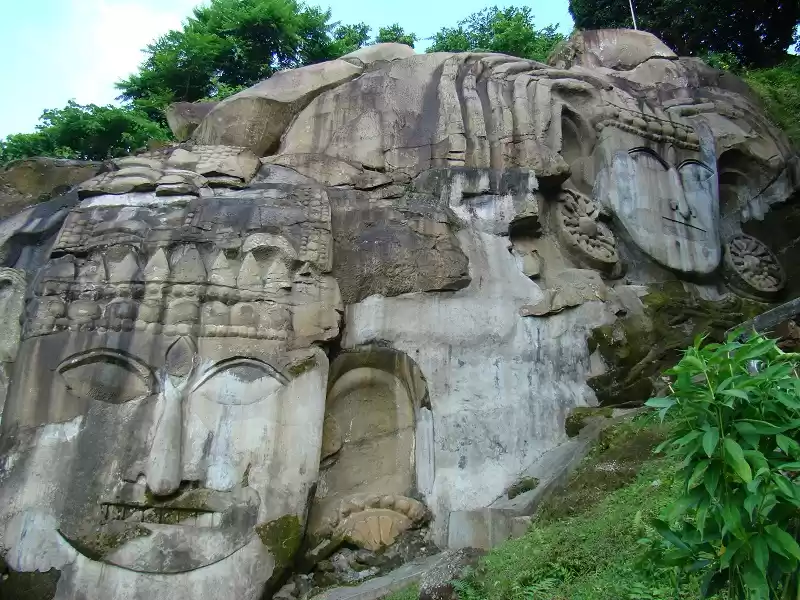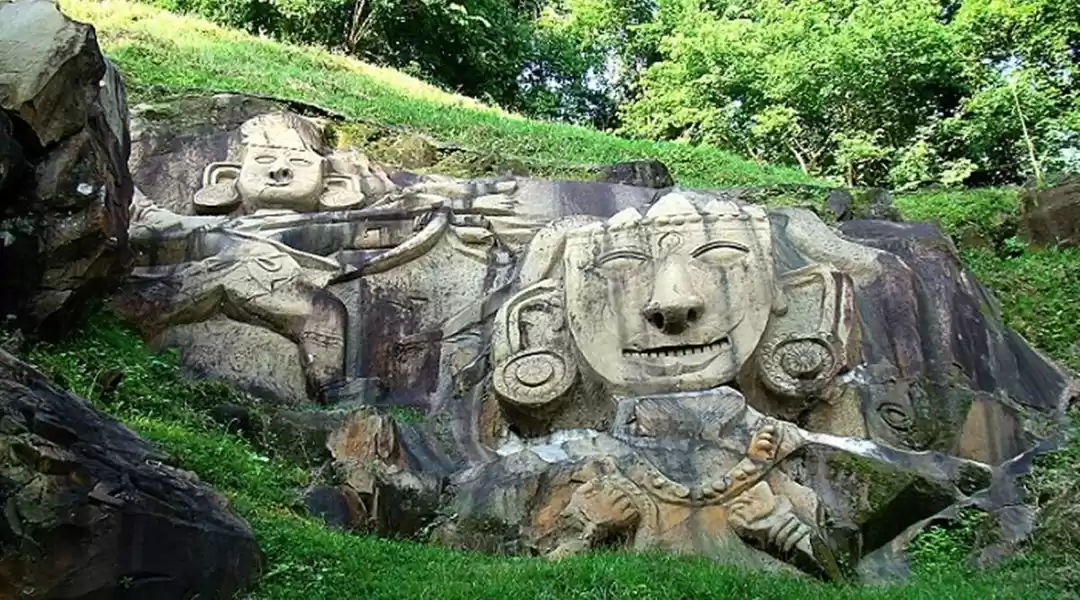Have you ever heard of Unakoti? If not, you are missing out on one of the most fascinating and mysterious places in India. Unakoti is an ancient pilgrimage site in Tripura, a state in North-east India, that boasts of thousands of rock carvings and sculptures of gods and goddesses. It is also known as the Lost Hill of Faces or the Hall of Faces because of the sheer number and variety of these artworks.
But what makes Unakoti even more intriguing is the mystery surrounding its origin and purpose. Who made these sculptures and why? How old are they and what do they represent? What are the legends and myths associated with Unakoti? And how can you visit this hidden gem in Tripura?
In this article, we will answer all these questions and more. We will explore the history, legends, art, culture, and travel tips of Unakoti, and show you why it should be on your bucket list. Read on to discover the secrets of the Lost Hill of Faces.
History and Legends of Unakoti
The name Unakoti means one less than a crore (ten million) in Bengali, the official language of Tripura. It refers to the number of rock carvings and sculptures that are said to exist on the hill.
However, no one knows the exact number or the age of these artworks. Some estimates suggest that there are around two lakh (two hundred thousand) sculptures, while others claim that there are many more hidden under the vegetation and soil. The age of these sculptures is also disputed, ranging from 7th to 9th century CE to as old as 12th to 15th century BCE.

But what is even more intriguing than the numbers and dates are the stories and legends behind Unakoti. According to one popular legend, Unakoti was once a resting place for Shiva, the supreme god in Hinduism, and his entourage of one crore gods and goddesses. They were on their way to Kashi (Varanasi), another holy city in India, when they decided to spend a night at Unakoti. Shiva instructed everyone to wake up before sunrise and resume their journey.
However, only Shiva woke up on time, while the rest of the gods and goddesses were still asleep. Angry at their negligence, Shiva cursed them to turn into stone sculptures and left for Kashi alone. Thus, Unakoti became the hill where one less than a crore gods and goddesses remained as rock carvings.
Another legend attributes the creation of Unakoti to a sculptor named Kalu Kamar, who was a devout follower of Shiva. He had a dream in which he asked Shiva to take him along to Kashi. Shiva agreed, but on one condition: Kalu Kamar had to sculpt one crore images of gods and goddesses on the hill before sunrise. Kalu Kamar took up the challenge and started carving the sculptures with his hammer and chisel. He worked tirelessly throughout the night, but fell short of one sculpture when the sun rose. As a result, he could not complete his task and was left behind by Shiva.
There are many other legends and myths associated with Unakoti, such as the presence of a secret tunnel that leads to a hidden chamber where Shiva's trident is kept, or the existence of a wish-fulfilling spring that can cure any disease. Whether these stories are true or not, they add to the charm and mystery of Unakoti.
You may also like to check out: 7 Lesser Known Gems of Northeast We Bet You Didn't Know About!
Art and Culture of Unakoti
Unakoti is not only a place of legends, but also a place of art and culture. The rock carvings and sculptures that adorn the hill are remarkable examples of ancient Indian artistry and craftsmanship. They depict various gods and goddesses from Hinduism, such as Shiva, Parvati, Ganesha, Vishnu, Durga, Hanuman, Kartikeya, etc., as well as some animals, birds, flowers, geometric patterns, etc.
The most prominent and impressive sculpture is that of Unakotiswara Kal Bhairava, a fierce form of Shiva. It is located at the main entrance of Unakoti and measures about 30 feet in height. It has four heads facing four directions and a headdress with a crescent moon and a snake. It also has a third eye on the forehead and a moustache on the upper lip. The sculpture is carved on a vertical rock face and is surrounded by smaller sculptures of other gods and goddesses.

Another notable sculpture is that of Ganesha, the elephant-headed god of wisdom and success. It is located on the opposite side of the Unakotiswara Kal Bhairava sculpture and measures about 10 feet in height. It has a large trunk, big ears, and a pot belly. It is also carved on a vertical rock face and is flanked by smaller sculptures of other gods and goddesses.
Apart from these, there are many other sculptures that are worth seeing, such as the Nandi Bull, the vehicle of Shiva, the Panchamukhi Hanuman, the five-faced monkey god, the Durga Murti, the goddess of power, etc. Some of these sculptures are in good condition, while others are eroded or damaged by natural or human factors. Some of them are also hidden under the vegetation or soil and are yet to be discovered or excavated.
Unakoti is not only a place of art, but also a place of culture and religion. It is considered as one of the Shakti Peethas, the sacred sites where the body parts of Sati, the first wife of Shiva, fell after she immolated herself. It is also a popular pilgrimage site for Shaivites, the devotees of Shiva, who visit Unakoti during the Ashokastami Mela, a festival that takes place in April every year.
During this festival, thousands of pilgrims take a holy dip in a nearby river and offer prayers to the Unakotiswara Kal Bhairava sculpture. They also participate in various cultural and religious activities, such as singing, dancing, chanting, etc.
Some scholars also suggest that Unakoti may have some connection with Buddhism, as some of the sculptures resemble Buddhist icons, such as Buddha, Bodhisattva, Tara, etc. They also point out that Unakoti may have been influenced by the Gupta and Pala art styles, which were prevalent in India during the 4th to 12th centuries CE and were associated with Buddhism. However, these claims are not conclusive and require further research and evidence.
Travel Tips and Recommendations for Unakoti
If you are interested in visiting Unakoti and experiencing its beauty and mystery, here are some travel tips and recommendations for you:
- The best time to visit Unakoti is between October and March, when the weather is pleasant and dry. You can also visit during April if you want to witness the Ashokastami Mela festival.
- The nearest airport to Unakoti is in Agartala, the capital city of Tripura, which is about 178 km away. You can take a flight from major Indian cities, such as Kolkata, Delhi, Mumbai, etc., to Agartala and then hire a taxi or a bus to reach Unakoti.
- The nearest railway station to Unakoti is in Kailashahar, the district headquarters of North Tripura, which is about 10 km away. You can take a train from major Indian cities, such as Guwahati, Kolkata, Delhi, etc., to Kailashahar and then hire a taxi or an auto-rickshaw to reach Unakoti.
- The nearest bus stand to Unakoti is also in Kailashahar, which is well connected by road to other parts of Tripura and neighboring states, such as Assam, Mizoram, etc. You can take a bus from Agartala or other cities to Kailashahar and then hire a taxi or an auto-rickshaw to reach Unakoti.
- There are no hotels or guest houses near Unakoti, so you will have to stay in Kailashahar or Agartala if you want to spend a night or more. You can find various options for accommodation according to your budget and preference online or offline.
- There are no restaurants or cafes near Unakoti, so you will have to carry your own food and water or buy some snacks from local vendors. You can also try some local delicacies in Kailashahar or Agartala, such as chakhwi (bamboo shoot curry), mui borok (fermented fish), gudok (rice beer), etc.
- There are no souvenir shops near Unakoti, so you will have to buy some souvenirs from Kailashahar or Agartala if you want to take back some memories of your trip. You can find some handicrafts made by local tribes, such as bamboo products, cane products, wood carvings, etc.
Unakoti is a unique and mysterious heritage site in Tripura, India, that features thousands of rock carvings and sculptures of gods and goddesses. It is also known as the Lost Hill of Faces or the Hall of Faces because of the sheer number and variety of these artworks.
Soon planning a trip to Unakoti? You'd be delighted to know that the Unique 'Angkor Wat' of North East India will now be more accessible to tourists!
In this article, we have explored the history, legends, art, culture, and travel tips of Unakoti, and showed you why it should be on your bucket list. We have learned about the meaning and origin of the name Unakoti, the legends and myths associated with Unakoti, such as Shiva’s curse, Kalu Kamar’s dream, and the departure of the gods, the artistic and archaeological significance of Unakoti, such as the bas-relief sculptures, the Unakotiswara Kal Bhairava head, and the hidden carvings, the cultural and religious importance of Unakoti, such as the Ashokastami Mela festival, the Shaivite pilgrimage, and the possible Buddhist influence, and the travel tips and recommendations for Unakoti, such as how to reach it, where to stay, what to eat, and what to buy.
We hope this article has inspired you to visit Unakoti and experience its beauty and mystery for yourself.

